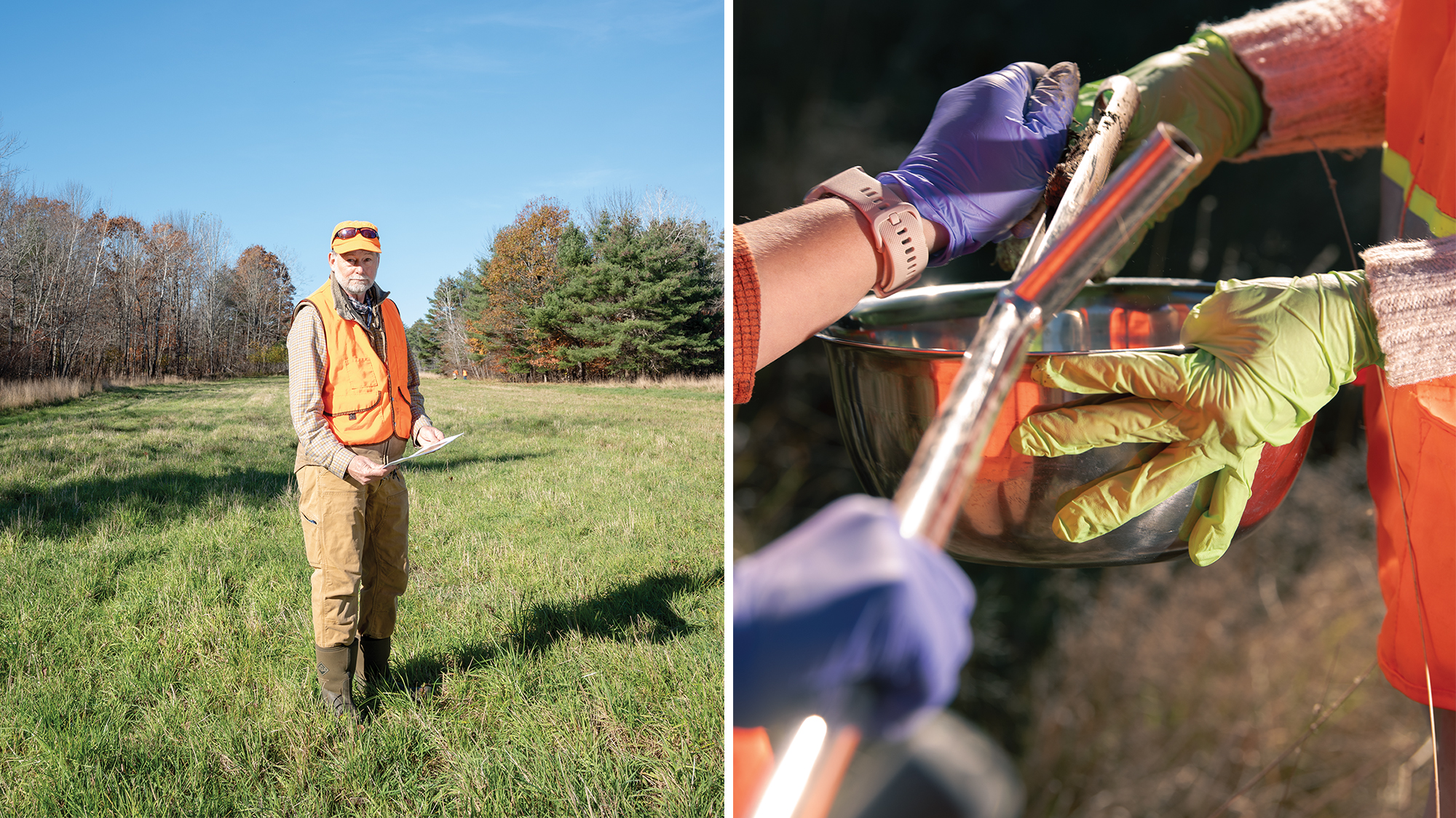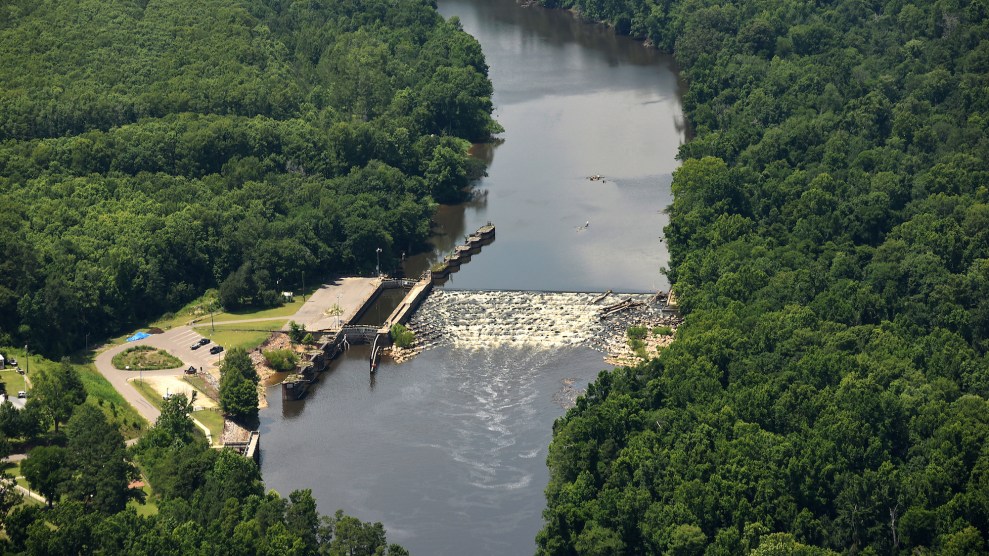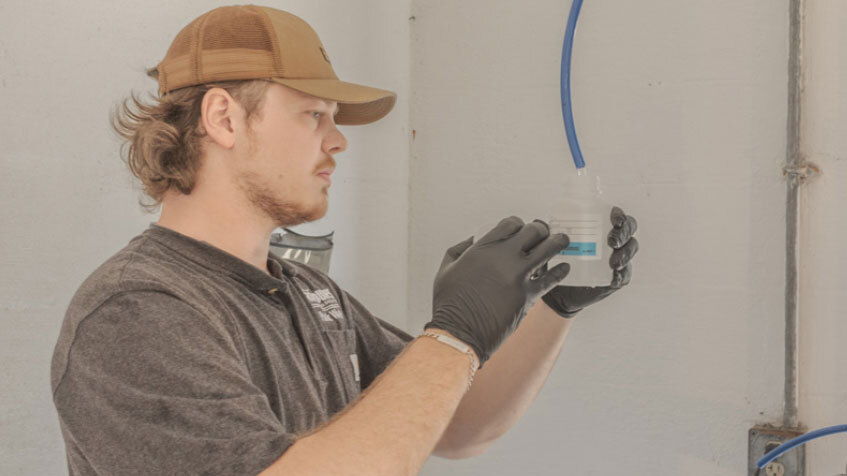Dostie Farm, an organic dairy in Fairfield, Maine, was thriving until one day in October 2020 when owner Egide Dostie Jr. got a call from Stonyfield, his exclusive buyer. Something was off with the farm’s milk: Tests had found that it contained three times the state’s allowable level of perfluorooctanesulfonic acid, one of the class of “forever chemicals” known as PFAS.
“We called bullshit,” Dostie remembers. PFAS contamination had recently been found at two other Maine dairy farms. But those farms had used sewage sludge to fertilize their pastures—something Dostie had never done.
But, as Dostie later learned, his farm’s previous owners, like many of their peers back in the 1980s and ’90s, had spread the fields with sludge provided by a state program that promoted it as a safe, environmentally friendly fertilizer—and delivered it to farmers for free. At the time, few people realized that chemicals in the sludge would eventually taint water, soils, milk, vegetables, and even farmers’ bodies.
PFAS, which reliably repel water, grease, and heat, are used in everything from paper plates to rain jackets. The compounds, which don’t break down in the environment, have ended up almost everywhere, including in living creatures. Decades of studies suggest links between some PFAS and increased risks of cancer, high cholesterol, immune system and reproductive problems, as well as fetal complications. While the EPA has proposed a ban in food packaging and this week announced limits in drinking water, the federal government has been silent on allowable levels in sewage sludge spread on farms or in the food they produce—much less a strategy to phase out the entire class of some 12,000 compounds.
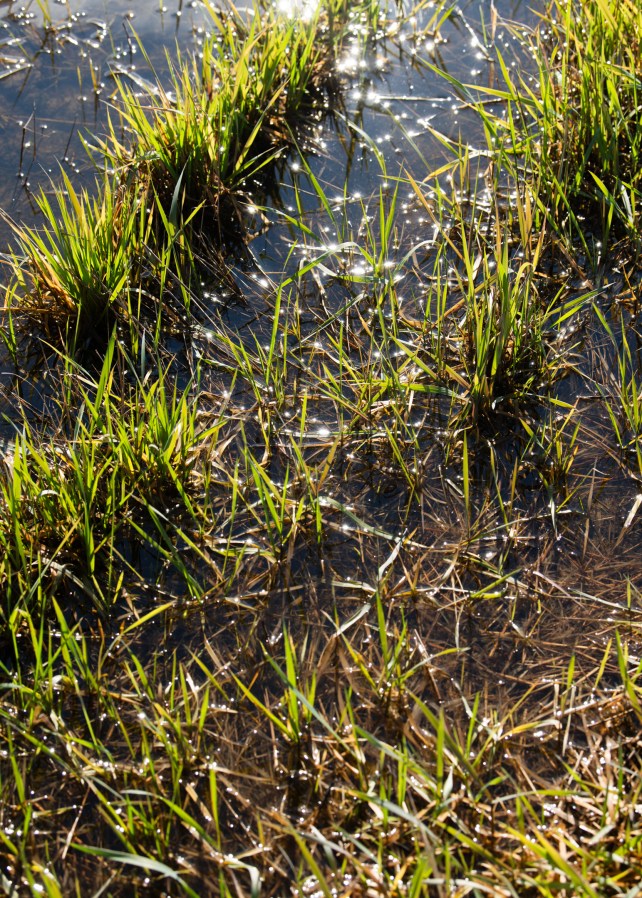
A puddle glistens on a PFAS-contaminated farm in central Maine.
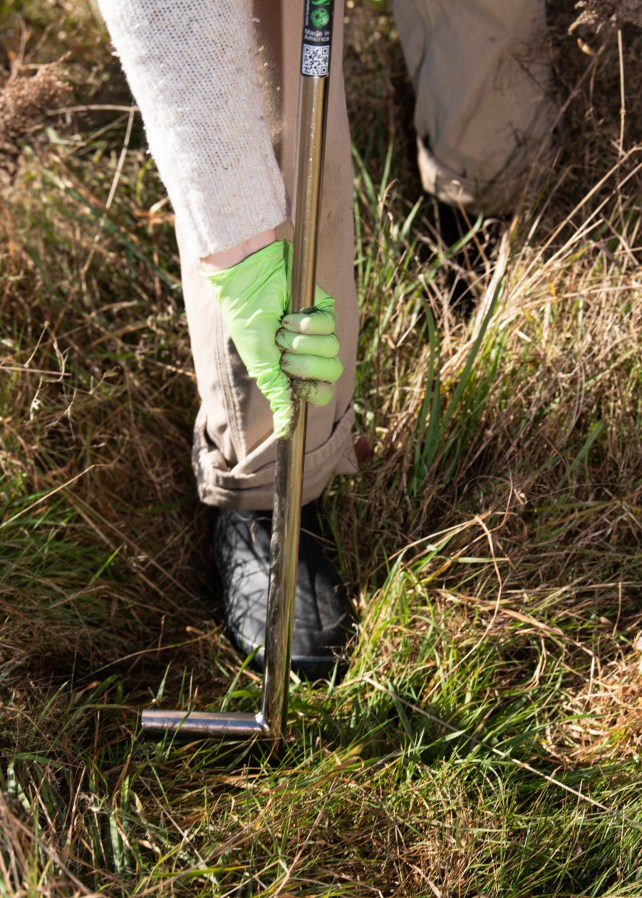
Rebecca Lincoln, a Maine CDC environmental epidemiologist, collects a sample for PFAS testing.
Maine could finally force Washington to take broader action. The state has developed the country’s first meaningful thresholds for the chemicals in some foods and soil, has banned the use of sludge as fertilizer, and will, by 2030, ban the sale of all products with intentionally added PFAS.
The first inkling that Maine’s state-sponsored sludge program may have contaminated farmland and drinking water came in 2016, when Fred Stone, a third-generation dairy farmer in southern Maine, alerted regulators that a voluntary EPA screening program for unregulated toxic substances had turned up high PFAS levels in a well located on his farm. Stone told his milk buyer, who suspended their contract. Without that income, he was forced to cull his herd. Making matters worse, he complains state officials, who turned up PFAS contamination at other sites, treated him like a “unicorn.” According to an investigation by the Maine Beacon, regulators working under Gov. Paul LePage, an industry-friendly Republican, minimized the problem and delayed notifying the public even as they quietly documented further evidence of contamination and enacted a limit in milk.
In 2019, when Democratic Gov. Janet Mills created a PFAS task force just three months into her first term to address growing concerns, Stone spoke out about his ordeal. “Toxic chemicals I never used and had never even known about contaminated my cows,” he said at a press conference on his farm. “Believe me, I would not wish this on my worst enemies.” As awareness of the sludge issue spread, organic vegetable operations also uncovered PFAS contamination, prompting several to pull products from shelves.
By 2021, in an attempt to suss out the true scale of contamination, the state began testing more than 700 sites where it knew sludge had been spread; so far, more than 50 farms have discovered soil or water tainted by PFAS. Some have folded, while other farmers have tried to adapt by importing clean water or PFAS-free feed, culling herds, switching to crops that absorb fewer PFAS, or limiting production to greenhouses and clean portions of land. Amid growing public concern, last year the state instituted limits for PFAS in soil where dairy livestock feed is grown, and set up a $60 million fund to help affected farmers. But the quest to curb how much PFAS reaches dinner tables proved far more complicated than anyone anticipated.
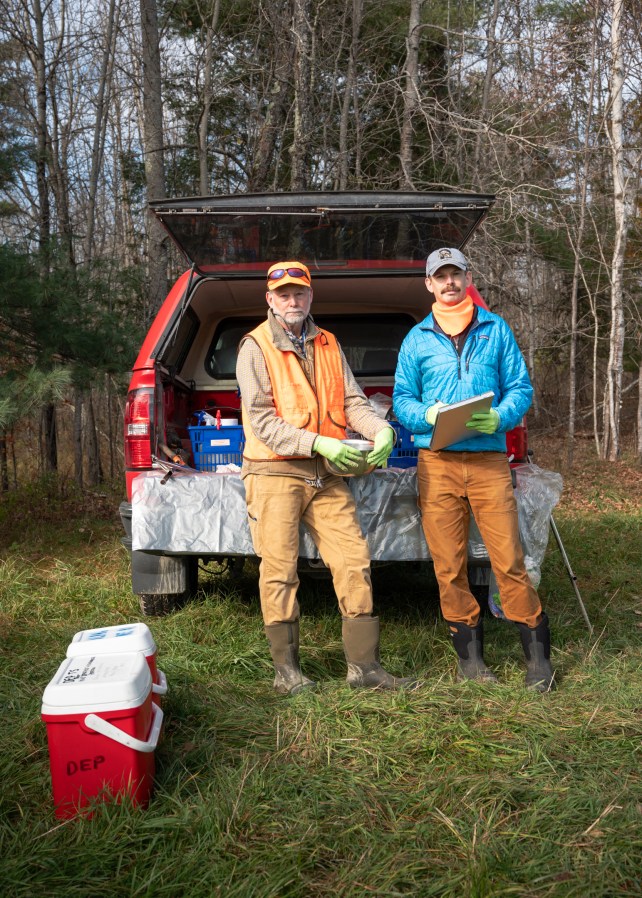
Maine State Toxicologist Andrew Smith, left, with his colleague Tom Simones.
On a sunny day in late August, I pulled up at Dostie’s farm to meet Andrew Smith, who, as Maine’s state toxicologist, helped establish state limits for perfluorooctanesulfonic acid (PFOS), the compound that contaminated Dostie’s milk. Smith’s team has been visiting farms and testing soil, plants, and milk to understand how PFAS move from the ground into forage crops, including grasses and corn. This is “real-world science,” Smith says, watching a colleague snip plants and collect soil samples.
One challenge Smith’s agency has encountered while setting limits for PFAS in food is that the threshold at which scientists suspect the chemicals pose a risk to human health keeps moving. In 2016, the EPA issued voluntary guidance advising against more than 70 parts per trillion of two types of PFAS in drinking water. Then, in 2022, the agency adopted a much stricter advisory of just 0.02 parts per trillion for pfos—and only 0.004 per trillion for another PFAS compound. Those levels are so low that if they were applied to certain foods, any detectable amount would essentially be too much, Smith says. For now, Maine’s limits on PFAS in milk and beef rely on less-stringent toxicity values.
As we bumped down a dirt lane between fields of rustling corn, Smith said the research underway at Dostie Farm has helped make one reassuring finding: Forever chemicals don’t necessarily last forever in livestock. More than a year after Dostie switched his cows to clean water and organic hay from uncontaminated parts of the farm, their milk’s PFAS levels fell below detection.
But more than 80 percent of Dostie’s pasture was contaminated, and the 35 acres that were clean weren’t enough to sustain his herd. So that fall, Dostie loaded his 350 animals onto trucks and sold them. He’s raising some new steers for meat and trying to lease some acreage to a solar farm. If neither works out, he might seek a buyout from the state fund.
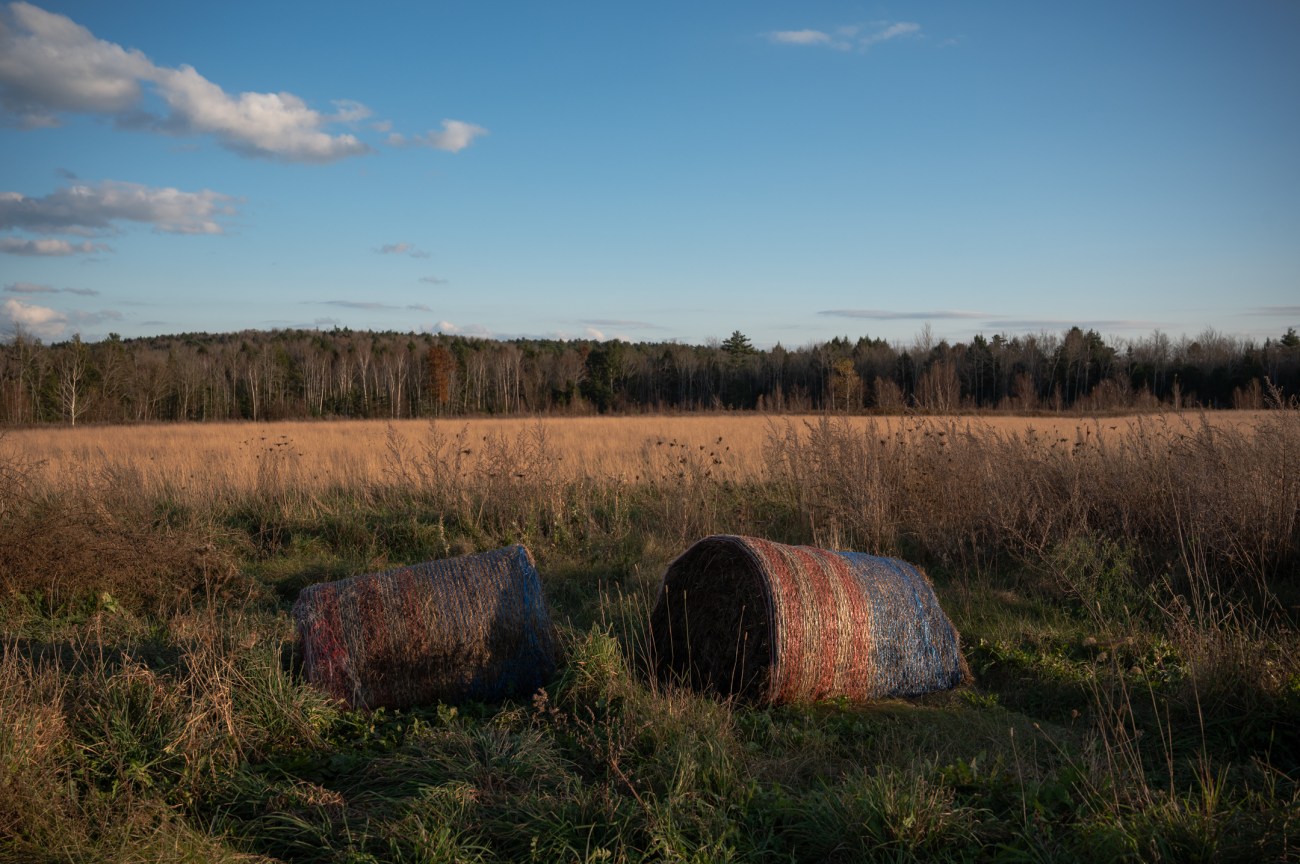
Contaminated hay rots on a farm belonging to Sue Hunter (not pictured), of Unity, Maine. Hunter once planned to turn the operation over to her grandson, but after testing revealed elevated levels of PFAS contamination, it is being used by state and academic researchers to study the compounds’ effects.
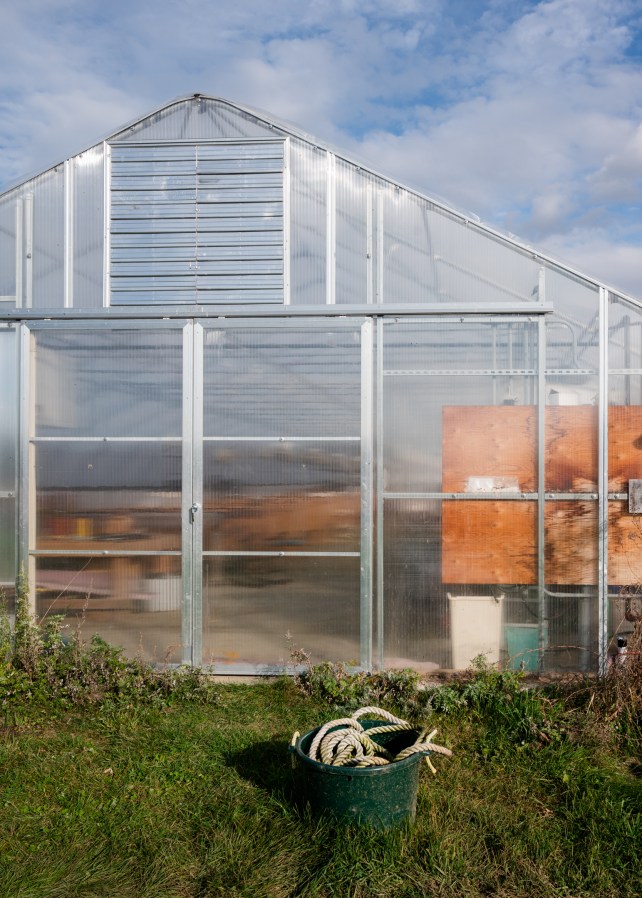
The greenhouse on Hunter’s 150 acre farm. Only about 25 acres are safe for agricultural use.
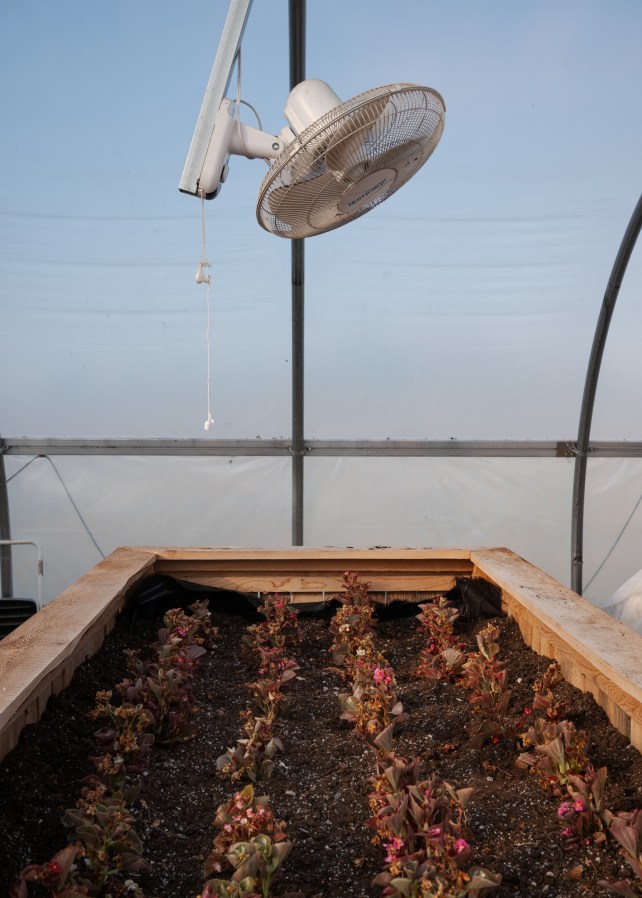
Plants grow in a raised bed in Hunter’s greenhouse, filled with shipped-in soil.
But as long as he still has his farm, Dostie wants scientists like Smith to use it to learn more about PFAS. “It may be too late for us,” he says, “but it might help someone else down the road.” There are a lot of farmers outside of Maine who might need that help. In 2022, EPA data shows more than a million dry metric tons of sewage sludge was spread on agricultural land.
State Sen. Stacy Brenner, an organic farmer who chairs the legislature’s Committee on Environment and Natural Resources, says she is proud of the way Maine has taken on PFAS contamination. But she warns its work is no substitute for more sweeping federal remedies. “Ultimately, little Maine, with 1.3 million people, is not going to be able to fix this,” Brenner says.
But Mainers are trying. Last spring, the state’s congressional delegation introduced a bipartisan bill that would direct the USDA to create a farmers compensation fund, increase testing, and fund remediation research. (The legislation was referred to committee, and backers hope it will make it into the long-delayed farm bill.) Adam Nordell, an organizer for the environmental group Defend Our Health and organic farmer who discovered his soil and water were highly contaminated, says the bill would guarantee “that farmers aren’t left to go bankrupt or to quietly toil away on poisoned soil.”
Meanwhile, Brenner says, other states are watching Maine’s response. Once the state started trying to answer the question of how widespread PFAS contamination is on farms, it was forced to confront dozens of others: Is food produced on contaminated soil safe to eat? Should farmworkers be worried about their health? Whose responsibility is it to help farmers whose land was contaminated? And how can contamination be stopped?
She has a theory as to why Washington is dragging its heels: “They recognize that they’re about to open Pandora’s box.”
This article was produced in collaboration with the Food & Environment Reporting Network, an independent, nonprofit news organization.
